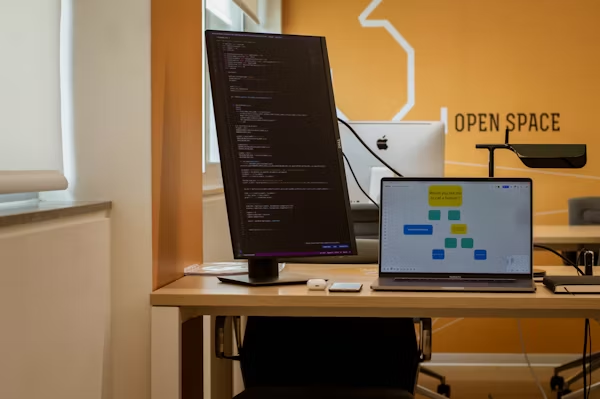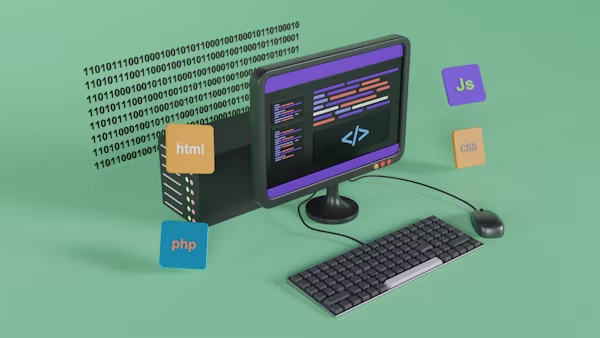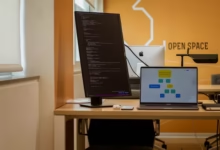
In a world rapidly moving toward automation, data-driven decision-making, and advanced AI integration, software development has never been more critical. One of the rising names in modern tech discussions is OXZEP7 — a versatile, adaptive, and scalable software solution that has started making waves in development communities. If you’re someone looking to develop OXZEP7 software, this comprehensive guide will take you through every step, from concept to deployment.
Whether you’re a solo developer, part of a startup, or an enterprise aiming to expand your digital capabilities, understanding how to develop OXZEP7 software can give you a strong edge in today’s competitive digital landscape.
What Is OXZEP7 Software?
Before you begin to develop OXZEP7 software, it’s crucial to understand what it is. OXZEP7 software refers to a new-generation platform or framework designed for modular, cross-platform application development. The unique selling point of OXZEP7 lies in its ability to integrate artificial intelligence, big data processing, and seamless cloud scalability all in one ecosystem.
Built for speed, security, and customization, OXZEP7 is especially popular among tech-forward organizations that prioritize efficiency, innovation, and long-term scalability.
Why Develop OXZEP7 Software?
There are several compelling reasons to develop OXZEP7 software, especially in 2025, when businesses are looking for smart, scalable, and user-friendly systems.
1. Cross-Platform Compatibility
When you develop OXZEP7 software, you’re creating applications that work across web, desktop, and mobile environments. This saves time and cost in building separate native applications.
2. High Performance
OXZEP7’s engine is optimized for real-time data processing, AI integration, and parallel task execution — perfect for modern applications that demand speed and efficiency.
3. Security-First Architecture
To develop OXZEP7 software is to build with security in mind. The platform supports built-in encryption, two-factor authentication modules, and secure API gateways.
4. Customization and Modularity
Whether you’re building ERP, CRM, fintech tools, or eCommerce solutions, OXZEP7 software allows for deep customization. You can plug in or remove features easily based on project needs.
Planning to Develop OXZEP7 Software: Where to Start?
Before jumping into the coding part, proper planning is essential. Developing successful software means starting with strong foundations.
Step 1: Define the Purpose
Ask yourself:
- What problem will your OXZEP7 software solve?
- Who is your target audience?
- Is the software consumer-focused or enterprise-level?
Clearly defining your project’s scope will guide your development.
Step 2: Choose the Right Tech Stack
To develop OXZEP7 software, you’ll typically work with:
- Backend: Node.js, Python, or Go
- Frontend: React, Vue.js, or Svelte
- Database: MongoDB, PostgreSQL, or Firebase
- Cloud: AWS, Azure, or Google Cloud
- AI Integration: TensorFlow, OpenAI APIs, or Hugging Face libraries
OXZEP7 is designed to be flexible, so the choice depends on your application’s needs.
Step 3: Assemble Your Team (Optional)
While it’s possible to develop OXZEP7 software solo, having a dedicated team can make the process faster and more professional. Consider the following roles:
- Project Manager
- Backend Developer
- Frontend Developer
- UI/UX Designer
- QA Tester
- DevOps Engineer
Step-by-Step Process to Develop OXZEP7 Software
Let’s walk through the process of building your first OXZEP7 software product from scratch.
Phase 1: Design
Start by drafting wireframes and user interface mockups. Tools like Figma or Adobe XD are perfect for designing the user experience.
Remember: The OXZEP7 software trend is all about sleek, intuitive interfaces. Simplicity + functionality = success.
Phase 2: Backend Development
This phase involves setting up servers, APIs, database connections, and user authentication.
Important tasks:
- Set up RESTful or GraphQL APIs
- Use middleware for request handling
- Store data securely
- Optimize for performance (load balancing, caching)
When you develop OXZEP7 software, backend scalability is a key focus — make it cloud-native and resilient.
Phase 3: Frontend Development
Now it’s time to make your software visually functional. Use responsive frameworks like Tailwind CSS or Bootstrap along with React or Vue.
Make sure:
- Your interface adapts to all devices
- Forms are easy to fill out
- Navigation is intuitive
The frontend is your user’s first impression — and first impressions matter when showcasing your OXZEP7 software.
Phase 4: Integrate AI and Smart Features
Want your software to stand out? Add intelligent features such as:
- Chatbots for customer service
- Predictive analytics
- Smart notifications
- Voice or facial recognition
This is what sets apart ordinary apps from future-ready OXZEP7 software solutions.
Phase 5: Testing and QA
Never launch without testing. Test everything — functionality, security, speed, and cross-platform compatibility.
Use both:
- Manual testing (user testing, QA walkthroughs)
- Automated testing (Jest, Selenium, Cypress)
You want your OXZEP7 software to be bug-free, reliable, and optimized.
Phase 6: Deployment
Use cloud deployment tools like Docker, Kubernetes, or CI/CD pipelines through GitHub Actions or Jenkins. Deploy to secure cloud platforms like AWS or Azure.
OXZEP7 software is built for scalability — make sure your deployment strategy supports future growth.
Post-Launch: What Happens After You Develop OXZEP7 Software?
The journey doesn’t end at launch. In fact, that’s where real growth begins.
1. Monitor Performance
Use analytics and performance tracking to measure user behavior, server loads, and usage patterns.
2. Gather Feedback
Listen to your users. Their feedback helps you improve and evolve your OXZEP7 software.
3. Update and Improve
Release patches, add new features, and fix bugs regularly. Innovation is key in the develop OXZEP7 software space.
Real-World Use Cases of OXZEP7 Software
If you’re wondering what kind of projects you can build, here are a few ideas where developing OXZEP7 software makes perfect sense:
- E-learning Platforms – Personalized dashboards, course recommendation engines, and online classrooms.
- Financial Management Tools – AI-based expense tracking, investment dashboards, and budgeting tools.
- Healthcare Apps – Patient portals, telemedicine integrations, and health record management.
- Logistics and Supply Chain – Real-time inventory, AI-powered route optimization, and vendor management.
- SaaS Products – B2B tools with user-friendly UI and scalable backend.
SEO and Marketing Tips for Your OXZEP7 Software
Once you develop OXZEP7 software, you need people to find and use it. Here are some marketing tips:
- Optimize Your Website: Use the keyword “develop OXZEP7 software” in your blog posts, product pages, and FAQs.
- Create Demo Videos: Show people how your software works through visual content.
- Leverage LinkedIn and Reddit: Target tech communities where your audience spends time.
- Offer Free Trials or Demos: Let users test your OXZEP7 software to build trust and gain feedback.
- Collect Testimonials: Show real success stories to attract more users.

Conclusion
Learning to develop OXZEP7 software is more than just another tech task — it’s an opportunity to create something powerful, future-ready, and game-changing. From planning and development to testing and scaling, each phase of this journey helps you build software that is efficient, secure, and built for the modern digital world.
As the demand for intelligent, scalable, and user-centric applications grows, being able to develop OXZEP7 software positions you — or your company — as a leader in innovation.
So, whether you’re starting your first project or upgrading existing systems, now is the perfect time to dive into the OXZEP7 software ecosystem and create something extraordinary.





